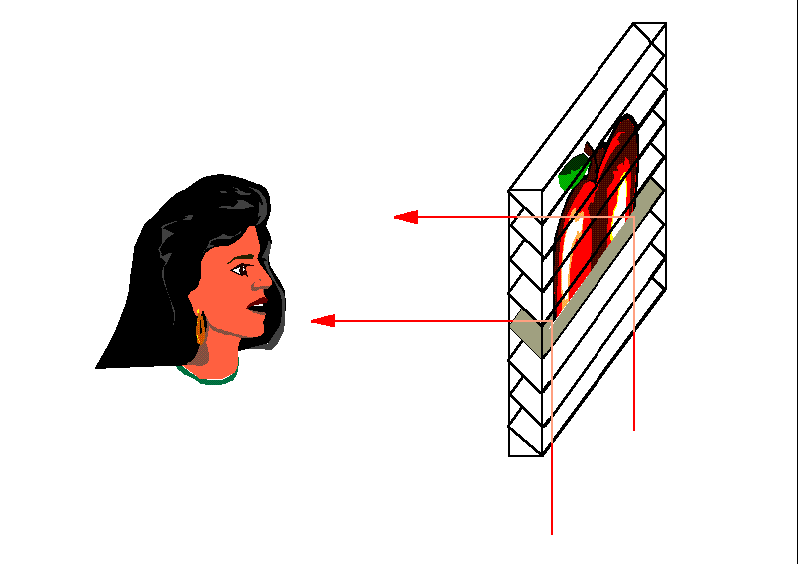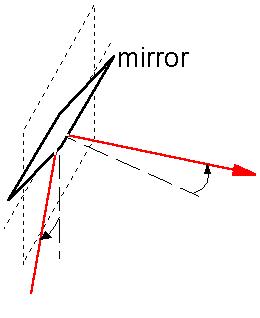
For video games there is needed a 3D display which is flat with a large (>50") screen and wide field of view. It is too expensive to make conventional liquid crystal displays with such large screens because of the difficulty of making thin film transistors over large areas.
 |
We are testing a screen where the liquid crystals act like a stack of mirrors angled at 45 degrees to the vertical. The mirrors are switchable - each only reflects when the liquid crystals are switched on. There is one mirror per row of the image so that when we shine rays up from the bottom edge of the screen, we can pick the row at which the rays are ejected and time-multiplex a two dimensional image. |
| When a ray is shone vertically up and reflected by one of the mirrors in the screen, the ray is reflected perpendicular to the screen. If the direction of the incident ray is rotated about the screen perpendicular, then the direction of the reflected ray rotates about the vertical axis.So by injecting rays at different angles into the bottom of the screen, we can control the direction in which rays are ejected from the screen, and this control of ray intensity versus direction is all that is needed to synthesise a three dimensional image. |  |